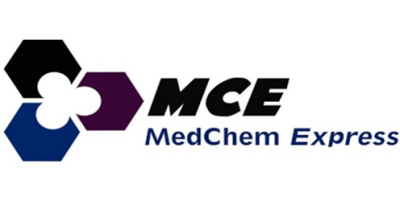

- Home
- Companies
- MedChemExpress LLC (MCE)
- Products
- MedChemExpress - Model BETP - ...
MedChemExpress - Model BETP - 1371569-69-5
BETP is an agonist of glucagon-like peptide-1 (GLP-1) receptor, with EC50s of 0.66 and 0.755 μM for human and rat GLP-1 receptor, respectively.MCE products for research use only. We do not sell to patients.
BETP
MCE China:BETP
Brand:MedChemExpress (MCE)
Cat. No.HY-103546
CAS:1371569-69-5
Purity:99.35%
Storage:Powder -20°C 3 years 4°C 2 years In solvent -80°C 2 years -20°C 1 year
Shipping:Room temperature in continental US; may vary elsewhere.
Description:BETP is an agonist of glucagon-like peptide-1 (GLP-1) receptor, with EC50s of 0.66 and 0.755 μM for human and rat GLP-1 receptor, respectively.
In Vitro:BETP is a GLP-1 receptor agonist, with EC50s of 0.66 and 0.755 μM for human and rat GLP-1 receptor, respectively. BETP (Compound B) is inactive in cells expressing the GLP-2, GIP, PTH, or glucagon receptors. BETP (1-10 μM) enhances insulin secretion in normal and diabetic human islets. In addition, BETP in combination with GLP-1 shows additive effects on increasing GLP-1 receptor signaling[1]. BETP increases the potency of oxyntomodulin by 10-fold (EC50 of 80 pM). GLP-1 does not change the potencies and efficacies of both oxyntomodulin and glucagon at the glucagon receptor. BETP (0-30 μM) increases the binding affinity of oxyntomodulin for the GLP-1 receptor[2].
In Vivo:BETP has insulinotropic effect in SD rats. BETP (10 mg/kg, jugular vein cannula) exhibits insulin secretagogue activity in the intravenous glucose tolerance test (IVGTT) model. BETP (10 mg/kg, i.v.)-treated rats need 20% higher glucose infusion rates and demonstrates higher plasma insulin levels in SD rat hyperglycemic clamp model[1]. BETP (5 mg/kg) enhances oxyntomodulin-stimulated insulin secretion[2].
Animal Administration:Rats[1] The IVGTT studies are performed. Male SD rats are group-housed three per cage in polycarbonate cages with filter tops. Rats are maintained on a 12:12 h light-dark cycle (lights on at 6:00 a.m.) at 21°C and receive diet and deionized water ad libitum. Rats are fasted overnight and anesthetized with 60 mg/kg pentobarbital for the duration of the experiment. For glucose and compounds (BETP, etc.) administration, a catheter with a diameter of 0.84 mm is inserted into the jugular vein. For rapid blood collection, a larger catheter with 1.02-mm diameter is inserted into the carotid artery. Blood is collected for glucose and insulin levels at time 0, 2, 4, 6, 10, and 20 min after intravenous administration of the BETP which is immediately followed by an intravenous glucose bolus of 0.5 g/kg. Plasma levels of glucose and insulin are determined[1].
IC50 & Target:EC50: 0.66 μM (Human GLP-1 receptor), 0.755 μM (Rat GLP-1 receptor)[1] In Vitro BETP is a GLP-1 receptor agonist, with EC50s of 0.66 and 0.755 μM for human and rat GLP-1 receptor, respectively. BETP (Compound B) is inactive in cells expressing the GLP-2, GIP, PTH, or glucagon receptors. BETP (1-10 μM) enhances insulin secretion in normal and diabetic human islets. In addition, BETP in combination with GLP-1 shows additive effects on increasing GLP-1 receptor signaling[1]. BETP increases the potency of oxyntomodulin by 10-fold (EC50 of 80 pM). GLP-1 does not change the potencies and efficacies of both oxyntomodulin and glucagon at the glucagon receptor. BETP (0-30 μM) increases the binding affinity of oxyntomodulin for the GLP-1 receptor[2]. MedChemExpress (MCE) has not independently confirmed the accuracy of these methods. They are for reference only. 0 --> BETP Related Antibodies
Hot selling product:Nimesulide | Terfenadine | Epirizole | Clofarabine | Alpha-Estradiol | Opicapone | Mebendazole | Corydaline | DOTA-tris(tBu)ester NHS ester | TNP
Trending products:Recombinant Proteins | Bioactive Screening Libraries | Natural Products | Fluorescent Dye | PROTAC | Isotope-Labeled Compounds | Oligonucleotides
References:
[1]. Sloop KW, et al. Novel small molecule glucagon-like peptide-1 receptor agonist stimulates insulin secretion in rodents and from human islets. Diabetes. 2010 Dec;59(12):3099-107. [Content Brief]
[2]. Willard FS, et al. Small molecule allosteric modulation of the glucagon-like Peptide-1 receptor enhances the insulinotropic effect of oxyntomodulin. Mol Pharmacol. 2012 Dec;82(6):1066-73. [Content Brief]
Brand introduction:
• MCE (MedChemExpress) has a global exclusive compound library of more than 200 kinds, and we are committed to providing the most comprehensive range of high-quality small molecule active compounds for scientific research customers around the world;
• More than 50,000 highly selective inhibitors and agonists are involved in various popular signaling pathways and disease areas;
• The products cover a variety of recombinant proteins, peptides, commonly used kits, more PROTAC, ADC and other characteristic products, widely used in new drug research and development, life science and other scientific research projects;
• Provide virtual screening, ion channel screening, metabolomics analysis detection analysis, drug screening and other professional technical services;
• It has a professional experimental center and strict quality control and verification system;
• Provide LC/MS, NMR, HPLC, chiral analysis, elemental analysis and other quality inspection reports to ensure the high purity and high quality of products;
• The biological activity of the products has been verified by the experiments of customers in various countries;
• A variety of top journals such as Nature, Cell, Science and pharmaceutical patents have included the scientific research results of MCE customers;
• Our professional team tracks the latest pharmaceutical and life science research and provides you with the latest active compounds in the world;
• It has established long-term cooperation with the world's major pharmaceutical companies and well-known scientific research institutions。
